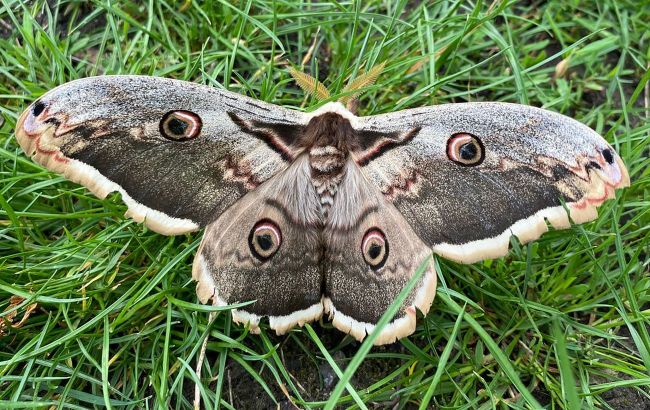Rare giant butterfly appears in Ukraine - Here's what it looks like
 The largest butterfly in Europe (photo: facebook.com/sw.dei)
The largest butterfly in Europe (photo: facebook.com/sw.dei)
In the Odesa region, a butterfly considered the largest in Europe and listed in Ukraine's Red Book was spotted. It is extremely rare in nature, and seeing one is something incredible. The State Ecological Inspectorate of the Southwestern District shared what this butterfly looks like and what is known about it on Facebook.
Where the largest butterfly in Europe was seen
The rare and spectacular butterfly was spotted near the village of Bashtanky in Podilskyi district, in the northern part of Odesa region. The name of the largest butterfly in Europe is the Giant Peacock Moth (Saturnia pyri), also known as the pear-shaped emperor moth or pear Saturnia.
Saturnia is the largest butterfly in Europe, with a wingspan of up to 15 centimeters. Its wings are adorned with "eye spots," which is why the butterfly is also nicknamed "peacock eye." Its wings are brownish-gray.
 Giant peacock moth (photo: facebook.com/sw.dei)
Giant peacock moth (photo: facebook.com/sw.dei)
Why seeing a Saturnia is a big deal
This butterfly species, being thermophilic, cannot survive prolonged frosts. According to ecologists, its appearance in Odesa region is rare and extremely valuable for specialists and nature enthusiasts.
The giant peacock moth is listed in the Red Book of Ukraine as a "vulnerable species." Its populations are preserved through passive protection in nature reserves.
What is known about this rare species
Saturnias are most commonly seen in May–June, but this species is mostly active at night. Males often fly during the day. From June to August, the butterfly remains in its caterpillar stage and hibernates as a chrysalis.
This butterfly is found in the Northwestern part of Africa, the Caucasus, Asia Minor, and Iran. Although its numbers are low in Ukraine, it can be found almost everywhere except in Polissia. The species is most commonly encountered in the country's south, where the environment is most favorable for it.
By the way, illegal capture, destruction, or harm to individuals of this species in Ukraine is subject to a fine.

